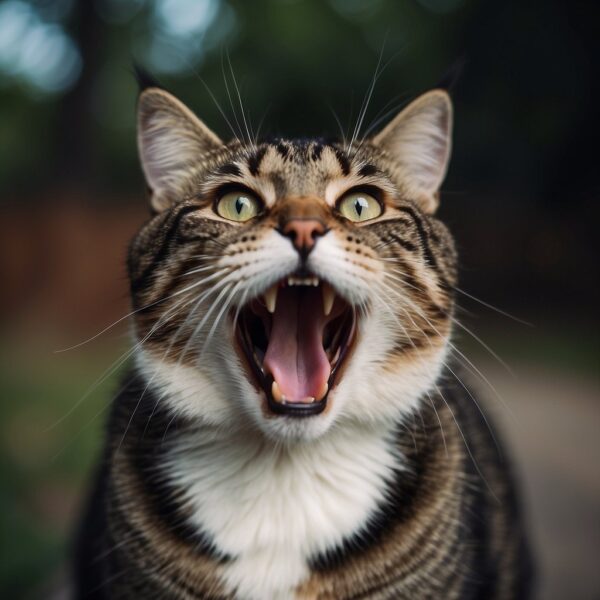
Cat Hairballs: Sign of Health Issues?
Cats are notorious for their grooming habits, often spending a significant portion of their day licking their fur. This meticulous behavior can lead to the ingestion of loose hair, which may accumulate in the digestive tract and form hairballs. While the occasional appearance of a cat hairball is typically a normal part of feline life, persistent or frequent hairball symptoms could indicate underlying health concerns that require attention.
Distinguishing between an ordinary hairball issue and a more serious condition is critical. Symptoms such as vomiting, retching, and coughing are common when a cat is trying to expel a hairball. However, if these symptoms are chronic, they may be mistaken for hairball problems when, in fact, they could be signs of allergies, asthma, or digestive troubles. Understanding the causes and recognizing the signs of potential complications can help ensure that cats receive appropriate care and treatment.
Key Takeaways
- Hairballs in cats are usually due to their self-grooming, but frequent occurrences may signal deeper health issues.
- Differentiating between normal hairball expulsion and symptoms of other conditions is essential for proper feline care.
- Recognizing the need for a veterinary consultation involves monitoring the frequency and severity of hairball-related symptoms.
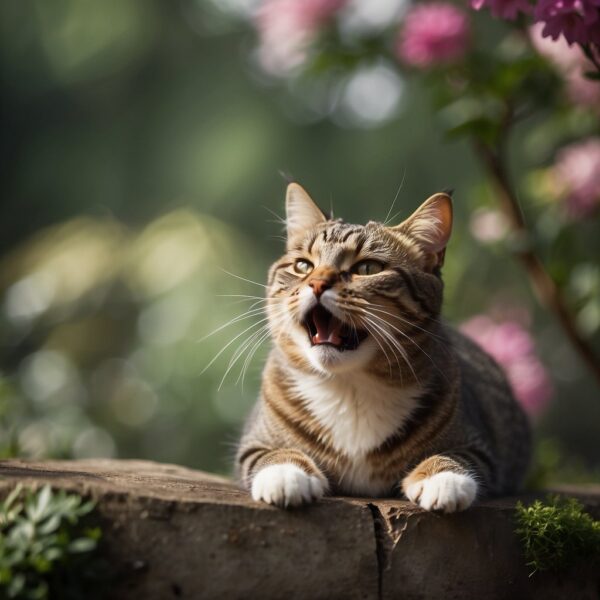
Understanding Hairballs in Cats
Hairballs occur when cats ingest hair during grooming, which can then accumulate in the digestive system. Recognizing the grooming habits and the role of the digestive process is essential to understand how hairballs develop.
The Role of Grooming in cat Hairball Formation
Cats are fastidious creatures that spend a significant part of their day grooming. They use their tongues, which are covered in tiny hook-like structures, to lick their fur. During grooming, they ingest loose hair. While most of the hair passes through the digestive system without issue, some can remain in the stomach and eventually form a hairball.
Digestive System and cat Hairball Development
The digestive system of a cat is designed to handle fur ingestion. However, the hair that does not pass through can form a hairball, or trichobezoar, in the stomach. When it becomes too large to pass through the intestinal tract, the cat may expel it by vomiting. Diets that include specific types of fiber may help to move the hair through the digestive tract more effectively, reducing the chance of hairball formation.
Common Symptoms and Diagnosis
Early detection and correct diagnosis of a coughing cat can be crucial for timely treatment and better outcomes. Cats commonly ingest fur during grooming, which can lead to the formation of hairballs. However, it is important to distinguish between hairball-related coughing and other health concerns that might present similar symptoms.
Recognizing Hairball-Related Coughing
Hairball-related coughing tends to occur when cats attempt to expel hairballs. Symptoms that may indicate the presence of hairballs include:
- Retching or gagging: An attempt to vomit that sometimes precedes the elimination of a hairball.
- Vomiting: Expelling a cylindrical mass composed of fur.
- Coughing: A gagging sound that may or may not result in hairball expulsion.
Frequency of these events can vary, with some cats experiencing hairballs more frequently. Owners might notice an increase in these symptoms during periods of increased grooming or shedding.
Other Health Concerns Mimicking cat Hairballs
Cats may exhibit similar coughing behavior due to several other health concerns. It is important to note that frequent coughing without the presence of hairballs could be indicative of:
- Upper respiratory infections: These can cause coughing and changes in the cat’s vocalization.
- Allergies: Similar symptoms may arise due to environmental allergens or irritants.
- Gastrointestinal issues: Problems unrelated to hairballs but impacting the gut can also prompt coughing and retching.
Should a cat demonstrate ongoing coughing, gagging, or retching without the production of hairballs, or if the symptoms are paired with lethargy, loss of appetite, weight loss, or other behavioral changes, it is advised to seek veterinary attention to rule out underlying conditions.
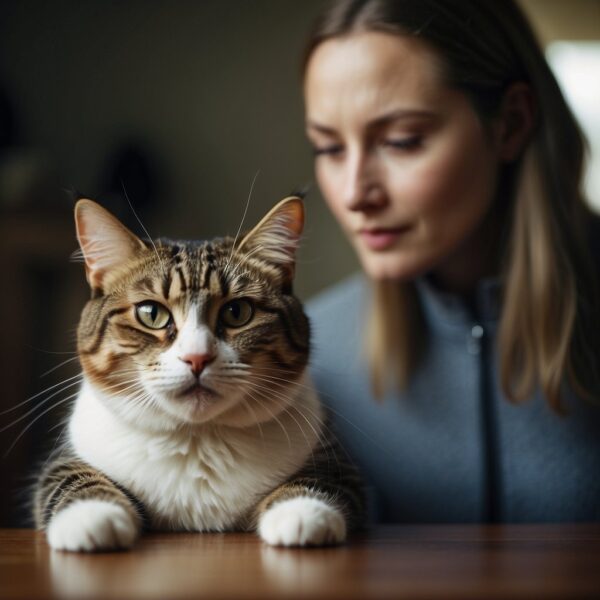
cat hairball Prevention and Control Strategies
Managing hairball issues in cats involves a two-pronged approach focusing on dietary management and maintaining a healthy coat through regular grooming. Specific strategies can help prevent the formation of hairballs and control their occurrence.
Dietary Additives and Hairball Control Food
A cat’s diet can be formulated to include certain additives that aid in controlling hairballs. Insoluble vegetable fiber plays a crucial role in improving gut motility and in the passage of ingested fur through the digestive tract. Aiding in this are specialized hairball control diets that often incorporate a mix of fibers to help move hair through the system efficiently. Increased hydration is also beneficial, encouraging cat parents to provide water-rich food options or multiple water sources to ensure adequate fluid intake.
- Fiber-Enriched Diets:
- Insoluble Fibers: Beet pulp, cellulose, and pumpkin are common ingredients.
- Soluble Fibers: Some diets include oat or wheat-based fibers.
- Hydration Focus:
- Wet Food: Can increase hydration and assist in hair passage.
- Fresh Water: Encourage drinking with fountains or multiple water bowls.
Regular Grooming and Shed Management
Regular grooming significantly reduces the amount of fur cats ingest during self-grooming, consequently decreasing the risk of hairball formation. Brushing cats several times a week helps to manage shedding and collect loose hair before it can be ingested. Shed management is an ongoing process that is particularly important in long-haired breeds.
- Grooming Techniques:
- Brushing: Using a suitable brush for the cat’s fur type. Long-haired cats may require daily brushing.
- Professional Grooming: In certain cases, to manage dense coats and reduce shedding.
- Shed Management:
- Seasonal Consideration: More frequent grooming may be necessary during peak shedding seasons.
- Environment: Minimizing environmental stressors can reduce excessive shedding.
Employing these strategies can significantly reduce the instances of hairballs and help maintain a cat’s overall health and well-being.
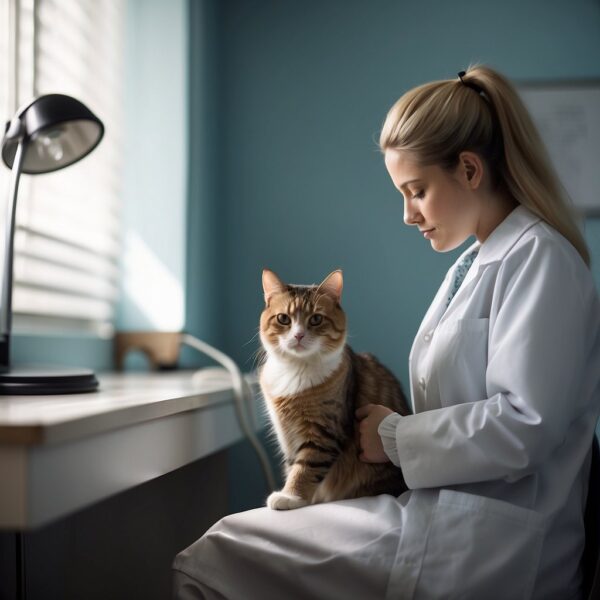
Effective Hairball Remedies
Effective hairball remedies for cats focus on easing the passage of hair through the digestive system or preventing excessive hair accumulation. These solutions range from over-the-counter products to natural remedies that can be incorporated into the cat’s diet.
ALWAYS CONSULT YOUR VETERINARIAN BEFORE GIVING YOUR CAT ANY REMEDY
Natural Hairball Remedies
In terms of natural remedies, pumpkin, being rich in fiber, can help with hairball management. The addition of a small amount of pureed pumpkin to a cat’s meal can ease the passage of hair through the digestive system.
Supplementing cat diets with apple pomace can also be beneficial, as its fiber content may aid in hairball control. Moreover, ensuring a balanced diet with sufficient vitamin E and taurine is crucial for maintaining overall feline health, which can indirectly affect hairball formation.
Giving cats a puree treat, can serve as both an interactive way to treat your cat and an opportunity to incorporate additional moisture into their diet, potentially aiding in hairball prevention and digestive health.
Best Practices for Administration
When managing a cat’s hairball issues, it’s fundamental to adhere to appropriate practices in administering remedies. Both the dosage and frequency of the treatments, as well as their integration into the cat’s daily routine, play critical roles in effectiveness.
Dosage and Frequency
The dose of any hairball remedy should be carefully aligned with the cat’s weight and the specific product’s guidelines. Over-the-counter hairball aids typically come with recommendations that must be strictly followed. For example, a pumpkin-based fiber supplement must be administered in the right quantity, usually a teaspoon or two mixed into the cat’s food, depending on the cat’s size and needs.
Hydration is equally essential, and cats should always have access to fresh water, especially when fiber intake is increased, as it assists with the passage of fur through the intestinal tract.
Incorporating fatty acids into the cat’s diet can improve skin and coat health, reducing excess shedding that leads to hairballs. It’s paramount to use the correct dose, which could be provided in a capsule or a pump liquid form, often ranging from 1/4 to 1 teaspoon daily.
Integrating Remedies into Routine
To successfully administer hairball remedies, they must become a seamless part of the cat’s routine. Introduce any change gradually to allow the cat to adjust without stress. When introducing pumpkin or other fibrous foods, start with a small amount mixed with their regular food, gradually increasing to the recommended dose.
For remedies provided less frequently, such as those given weekly, pick a consistent day and time that aligns with the cat’s existing feeding or grooming schedule.
Remember, while the aforementioned practices may help in managing hairballs, they should not be a substitute for veterinary advice, especially if a cat demonstrates chronic coughing or other symptoms that could indicate a more serious condition requiring medical attention.
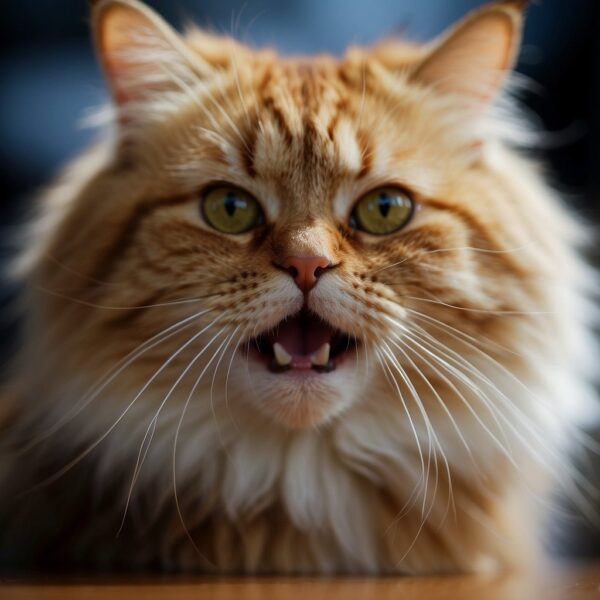
Potential Side Effects and Precautions
When administering hairball remedies to cats, it’s crucial to be aware of possible side effects and recognize when to seek veterinary guidance. Not all treatments are suitable for every cat, and what aids one might inadvertently harm another.
Monitoring for Adverse Reactions
Cats can react differently to hairball remedies. Some may experience digestive distress, such as vomiting or diarrhea. Monitoring a cat after giving a hairball treatment is essential. Signs of an adverse reaction include:
- Loss of appetite
- Lethargy
- Changes in stool consistency
- Excessive grooming
Cat parents should keep a chart or log that notes the cat’s reactions. This helps identify patterns and reactions that could suggest intolerance or allergies to the substance ingested.
When to Consult a Veterinarian
Immediate veterinary consultation is warranted if a cat shows severe symptoms after ingesting a hairball product. Such symptoms include:
- Persistent vomiting or diarrhea
- Difficulty breathing
- Unusual coughing
Recognizing the difference between a cat trying to expel a hairball and one suffering from a negative reaction to a remedy is critical. If the cat’s condition does not improve after the treatment, or if there are concerns about the product’s side effects, a veterinarian should assess the situation. A professional can determine if symptoms are due to a hairball blockage, an adverse reaction to the product used, or an unrelated medical condition.
Supporting Overall Health
A cat’s overall health is crucial in preventing excessive coughing due to hairballs. Effective strategies focus on maintaining a healthy coat and ensuring proper digestion through targeted nutrients.
Promoting a Healthy Coat
The condition of a cat’s coat is directly related to their health. Regular grooming removes loose fur before it can be ingested. Owners should assist in the grooming process especially for long-haired breeds. Diet plays a vital role; a balanced intake of omega-3 and omega-6 fatty acids helps maintain the oil balance in a cat’s skin, resulting in a healthier coat. Foods rich in these fatty acids or supplements designed for skin and coat health can be incorporated into their diet.
Choosing Quality Hairball Products
When selecting hairball products for cats, it is crucial to consider the efficacy of the ingredients and adhere to recognized certifications and standards.
Assessing Ingredient Efficacy
Bestsellers in the hairball remedy market often contain a blend of fibers and oils that facilitate the passage of ingested hair through the digestive system. Petromalt technology, for instance, is a term that refers to the petrolatum-based products designed to act as a lubricant, easing hairball expulsion. While popular, parents should review the specific components to ensure they align with their cat’s dietary needs.
Hairball treatment for cats frequently combines dietary fiber, which increases the bulk of the stool, helping move hairballs along the gastrointestinal tract. Products may also contain omega fatty acids, which promote a healthy coat and minimize excessive shedding, thereby reducing the amount of hair ingested during grooming.
Certifications and Standards
The presence of the National Animal Supplement Council (NASC) Quality Seal on hairball remedies for cats indicates that the product meets high standards for production and quality control, ensuring the consumer is purchasing a product that has been rigorously tested and reviewed.
Consumers should also look for products that align with the American Association of Feed Control Officials (AAFCO) guidelines. This ensures that the product adheres to national standards for pet food nutrient profiles, ingredient definitions, and product labeling.

Frequently Asked Questions
This section addresses common concerns about differentiating between a cat’s cough related to hairballs and other potential health issues.
How can I differentiate between my cat coughing and a hairball issue?
A coughing cat may exhibit a dry, hacking cough without expelling anything, whereas a hairball issue typically ends with the cat expelling a tubular mass of hair.
What are the symptoms indicating a hairball blockage in cats?
Symptoms of a hairball blockage in cats include persistent gagging, retching, lethargy, loss of appetite, or constipation.
What should I do if my cat is coughing but hasn’t produced a hairball?
If a cat is coughing without producing a hairball, closely monitor its behavior and consult a veterinarian, as this may indicate an underlying respiratory condition.
Are there any home remedies effective for a coughing cat?
Mild cases of coughing in cats due to hairballs can sometimes be alleviated with increased fiber intake or specialized hairball pastes, but always seek veterinary advice before trying home remedies.
What does a cat hairball cough typically sound like?
A cat coughing from a hairball often makes distinct hacking noises, sometimes confused with gagging or vomiting sounds.
What steps can I take to treat a cough in my cat?
Treatment for a coughing cat starts with a veterinary examination to determine the cause. If related to hairballs, increased grooming and dietary changes may be recommended.